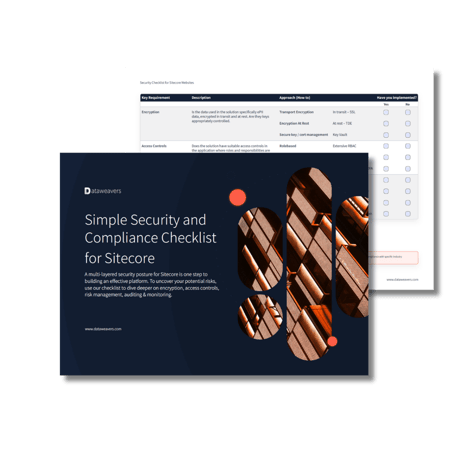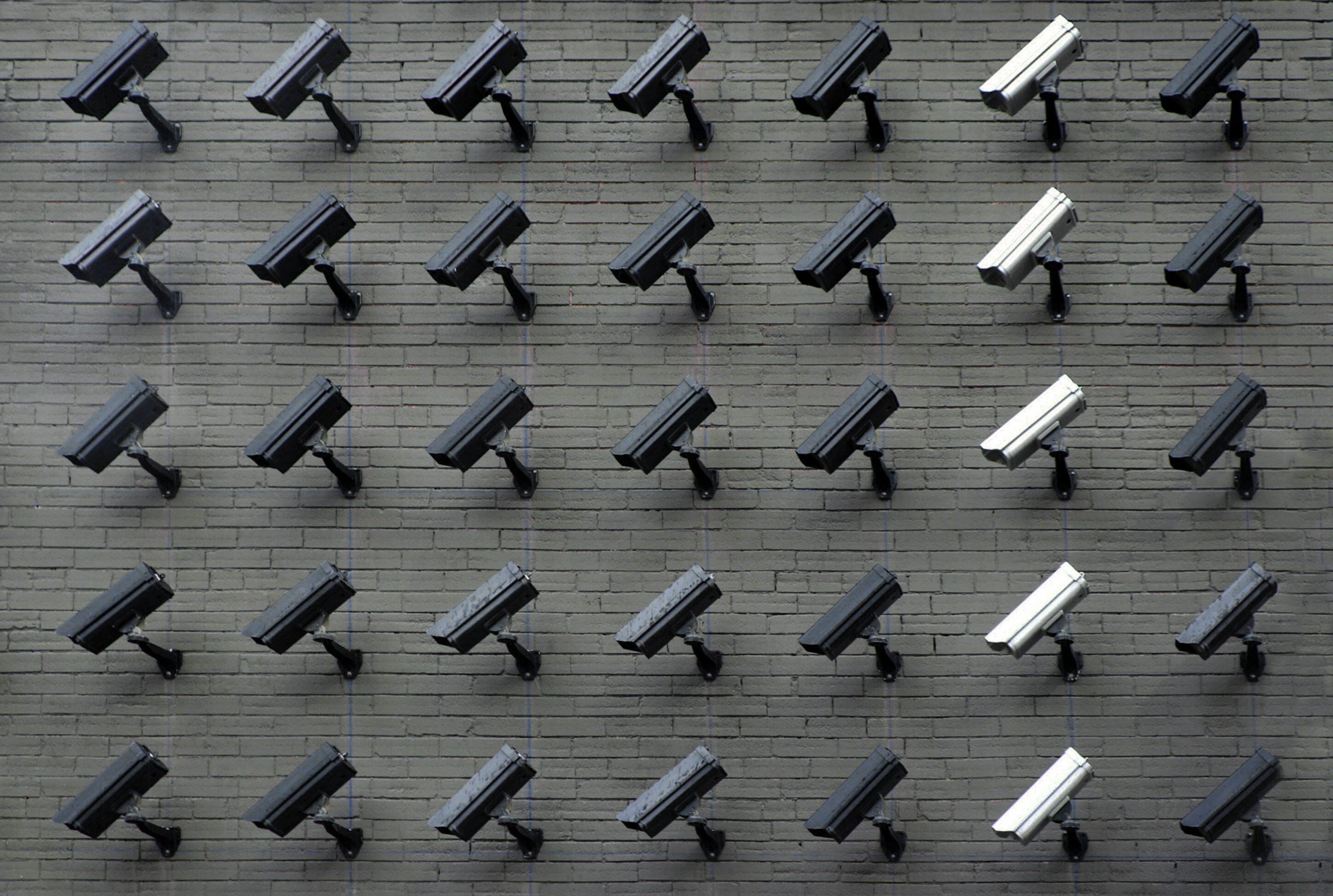Having a multi-layered security baseline for a Sitecore application and infrastructure environment is like having an impenetrable fortress guarding a valuable treasure. Just like how a fortress has layers of defense, such as moats, walls, and towers, a good security baseline has multiple layers of security measures, such as firewalls, intrusion detection systems, and access controls, protecting the valuable digital assets from malicious attacks. These security measures act as sentries, constantly monitoring and protecting the valuable treasure and ensuring that only authorized individuals can access it. Just like how a fortress needs to be maintained and updated regularly to keep up with the latest threats, a full stack security baseline needs to be constantly maintained and updated to ensure that the digital assets are always protected from new and evolving security threats.
Digital Leaders want to be seen as business enablers. This means ensuring flawless availability from an end-to-end optimized solution, operating on a secure and trusted platform.
Unfortunately, many Sitecore teams find it hard to trust the platform. They have unreliable infrastructure with a questionable security posture that is generic as opposed to specific. Furthermore, this is often coupled with tech debt: the net result being that teams often focus on maintaining the infrastructure rather than building valuable digital experiences.
To overcome these challenges, platform owners need flawless performance including the security posture of their Sitecore DXP, giving them the ability to make decisions with velocity because they have a platform they can trust.
So, as a platform owner, how can you:
- Minimize risk
- Optimize performance
- Maximize platform value, and
- Provide certainty and peace of mind?
A key requirement of being a true business enabler, especially when it comes to your Sitecore platform, is not having a platform that keeps you awake at night worrying about security. Instead, you need a platform that you can trust to be reliable, available, and secure, and this starts with having a multi-layered security baseline.
The importance of a multi-layered security baseline for your Sitecore platform
Everybody knows that security is important. Reports of corporate systems being hacked and websites being defaced hit news headlines in what seems like a daily occurrence. This is the constant worry that haunts all Digital Leaders: “Will my site be up tomorrow?” When your website is down or defaced it causes significant financial damage. If a customer cannot place their order, browse your stock, or find the information they need from your website because it is down, they will quickly switch to a competitor – leading to loss of revenue.
Furthermore, a website outage means significant reputational damage. If a customer can’t access your website, this leads to a loss of trust in the brand. In situations like this, such reputational damage may cause a customer to switch to a competitor.
Implementing a multi-layered security baseline within the Sitecore application and infrastructure environment is imperative to fortify against potential threats and ensure the integrity of valuable digital assets. Security needs to be baked in at every level, ensuring that the business can move quickly whilst maintaining security through a secure-by-default posture. Commencing at the infrastructure layer, advanced firewalls and intrusion detection systems serves as the initial line of defense. Vulnerability scanning and remediation protocols must be systematically integrated to identify and address potential weaknesses across the entire MarTech ecosystem.
Access controls, such as multifactor authentication and stringent authorization mechanisms, should be integrated into the Sitecore application and infrastructure environment to regulate user permissions. Encryption, including both data in transit and at rest, ensure data confidentiality no matter where it resides. Continuous monitoring and auditing mechanisms facilitate the detection of anomalous activities, enabling swift responses and the prevention of potential security incidents.
In adherence to industry standards and regulations such as GDPR and PCI-DSS, comprehensive compliance measures should be implemented throughout the digital ecosystem. Regular security assessments, penetration testing, and code reviews should be conducted to identify and rectify vulnerabilities within the application layer. This multi-layered approach to security not only mitigates the risks associated with cyber threats but also underscores the commitment to data integrity, fostering trust among stakeholders and positioning the MarTech infrastructure as a secure and reliable foundation for marketing endeavors.
Challenges faced with implementing a multi-layered security baseline
Implementing a multi-layered security baseline can be a complex and challenging process. Some of the most common complaints we hear from customers undertaking this process are:
Underestimating the effort and resources required
Building security measures like this are not a one-time effort, but an ongoing process that requires a dedicated team and resources. Organizations may underestimate the effort required, leading to delays, incomplete security measures and a growing tech debt for the digital teams to overcome.
Focusing only on technology
While technology is a crucial aspect of security – especially when it comes to a Sitecore implementation in the cloud, teams must also focus on people and processes. This means digital teams are trained on security best practices & execution, and that security policies and procedures are in place and enforced.
Ignoring updates and patches
One of the most significant security risks is outdated software and systems. Organizations that ignore updates and patches for their Sitecore implementation may leave their platform vulnerable to breaches and threats. Watch our recent webinar that outlines the importance of upgrades when it comes to the security of your platform.
Neglecting third-party integrations
Sitecore implementations often rely on third-party integrations including customer relationship management platforms, data warehouses or analytics tools. Organizations should ensure that these integrations are also secure and comply with the same industry standards and regulations to ensure you’re whole MarTech stack is protected.
Failing to conduct regular security audits
Implementing a multi-layered security baseline is not a one-time activity but an ongoing process that requires regular monitoring and auditing as your platforms evolves. Organizations that fail to conduct regular security audits may miss potential vulnerabilities and threats that are uncovered over time.
Too many moving parts
The Sitecore application and infrastructure environment is extremely large and complex. Numerous web servers, firewalls, databases, subnets, routing tables, CDNs and certificates (and more) must all be kept in sync, secure, and up-to-date: all at the same time. This can present an insurmountable challenge to organizations, leading them to wonder where to even begin?
Complexities in cross-team collaboration
Collaborating across teams can be difficult at the best of times. Unfortunately, ensuring that your Sitecore application and infrastructure environment stays secure requires constant collaboration across multiple teams, from Digital to Security to Networking. In such a high-stakes game, the difficulty involved in collaborating only increases. Competing priorities and delivery schedules across teams only makes this harder.
Dataweavers bake security in at every level, ensuring a secure-by-default posture
Our approach is to leverage the best fit available technology based on a proven architecture and process. As one example for ingress traffic we apply significant controls outlined below.
Beginning at the edge, security automation with Cloudflare DDoS protection and Azure Front Door involves leveraging these services to enhance the security posture of web applications and mitigate the risks associated with Distributed Denial of Service (DDoS) attacks and other malicious activity.
Cloudflare provides robust DDoS protection through a global network that can absorb and mitigate global-scale attacks, preventing them from reaching the origin server. Automation in this context involves setting up DDoS protection rules and configurations that automatically detect and respond to potential threats. Cloudflare's security features, such as rate limiting, threat intelligence and Bot Protection, can be configured to automatically block malicious traffic. Cloudflare also provides content delivery network (CDN) functions at the edge, reducing load and protecting the origin.
Azure Front Door, on the other hand, provides global load balancing and web application firewall (WAF) capabilities. It can be used to distribute traffic across multiple regions and endpoints, improving performance and availability, as well as protecting the hosts behind it through its WAF capability. Azure Front Door provides a purpose built WAF layer that complements the Cloudflare eco-system and using a managed ruleset with additional specific rules for Sitecore solutions for additional layers of defense.
In a web operations (WebOps) environment, customizing firewall rules becomes crucial for fine-tuning security based on specific requirements. For Azure Front Door and Cloudflare, customization involves configuring the WAF rules and Bot Rules to match the application's security policies. This includes setting up rules to block or challenge requests that exhibit suspicious behavior, such as SQL injection or cross-site scripting attempts. The automation aspect comes into play by updating these rules dynamically based on threat intelligence feeds and emerging attack patterns.
Azure Front Door can be customized by configuring access control policies, such as rate limiting and IP restrictions. Automation here involves dynamically adjusting these policies based on real-time monitoring and threat intelligence. For example, if a sudden surge in traffic is detected, automation scripts can adjust rate limiting rules to mitigate potential DDoS attacks.
Collaboration between Cloudflare and Azure Front Door can provide a multi-layered security strategy. While Cloudflare focuses on DDoS protection and Bot security, Azure Front Door optimizes request routing and provides application-level defense. Customization and automation of rules in both services ensure a proactive and adaptive security approach tailored to the specific needs of the WebOps environment. Regularly updating and fine-tuning these rules based on evolving threats is essential for maintaining a resilient security posture.
From the example above it can be seen even looking at only ingress traffic achieving a good security posture for Sitecore requires a dedicated focus with a proven architecture.
How we can help you get started
Check out our simple Security Checklist for Sitecore, to self-measure where you stand:







